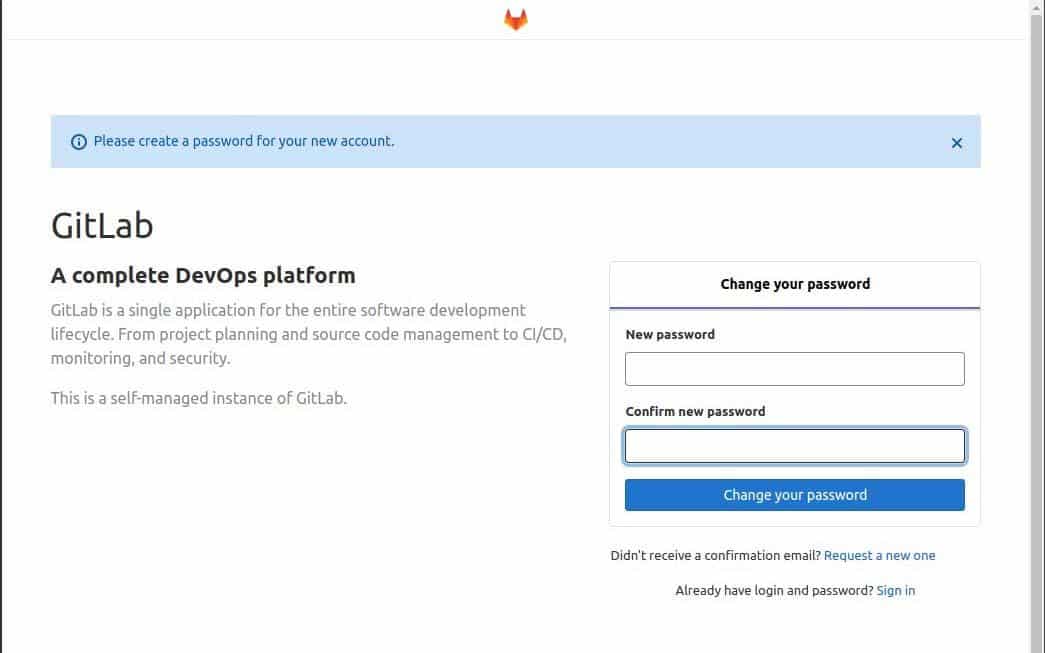

- #How to install gitlab for free#
- #How to install gitlab how to#
- #How to install gitlab code#
- #How to install gitlab password#


#How to install gitlab for free#
It is currently on version 4.0 and available for free under the MIT license.

Unlike GitHub or BitBucket, you host the GitLab installation yourself on servers you control. Intro to GitLabįor small companies, individual developers, or even large corporations that want to maintain control of their own code, GitLab may be an interesting alternative to other software.
#How to install gitlab how to#
Instead, you can have your own private GitLab installation running locally on your server or network, or even on your local machine in a VM, which I will show you how to do today. For small developers, this additional cost may not be an option. Renting another server will cost ~$20 a month extra on Amazon EC2 (with a Micro instance) or about the same amount on providers like Linode.
#How to install gitlab code#
While I do have a server that I use for production apps, I do not want to also place my code repositories and CI server on the same box. In a lot of ways, it is similar to GitHub’s Enterprise solution or Atlassin Stash- it allows you to host Git repositories and a management interface yourself, potentially within your company’s firewall. So you will have passedwritten in the green color as each step job successfully.GitLab is an open source clone of the popular GitHub service.
#How to install gitlab password#
Create a new file called password.txt and add your ansible vault password in it so that we can use it later.It will ask for password so, please give a password that you can easily remember ansible-vault create cred.yml To create a new encrypted file using ansible vault you need to run the below command. In this, I have used ansible vault to create the credentials file for the AWS access key & secret key so that we can manage it safely.Step 3:- Create an ansible file for AWS Credentials hosts: localhost # Place where we are running Ansible connection: local # Connection gather_facts: no vars_files: - cred.yml # Variables vars: ansible_python_interpreter: /usr/bin/python3 # Default Names title: "Demo" vpc_name: "" register: ec2_result If you can’t understand anything in the code you can have a better understanding from here The below code will create various resources on AWS.yml file inside the root directory and add the below code in it. Step 2:- Create an Ansible file for resource creation


 0 kommentar(er)
0 kommentar(er)
